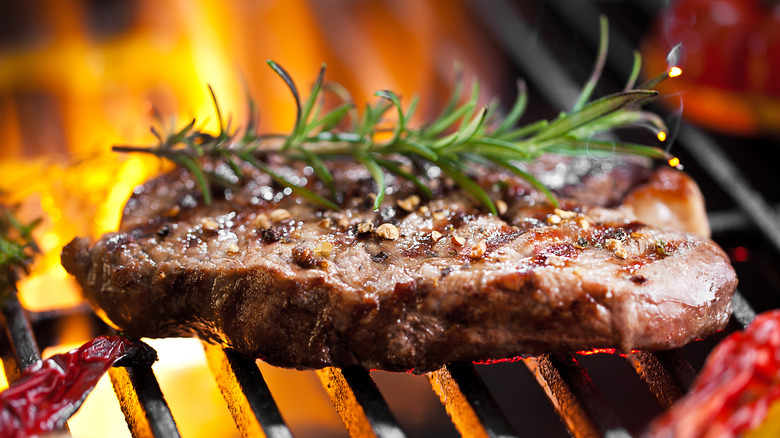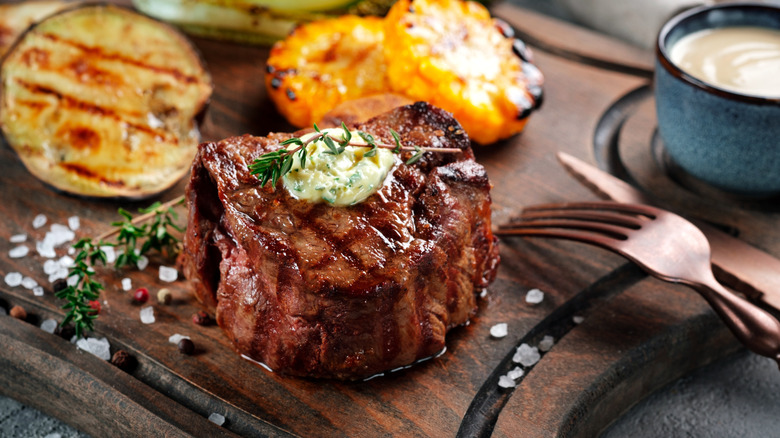Why You May Not Want To Order Well-Done Steak At A Steakhouse
In his memoir "Kitchen Confidential," the late chef Anthony Bourdain held well-done steak-eaters in contempt, admitting that in his kitchens, the cooks set aside the worst cuts of meat for the diners who didn't order their steak properly cooked.
YouGov did a survey on Americans' preference for steak doneness. Twenty-four percent of respondents preferred their meat well-done, beating medium-rare by one percentage point, meaning that the majority of eaters in their study wanted their steak fully cooked. Sorry, Tony.
A well-done steak is cooked to 165 degrees Fahrenheit. There is no pink center; it is uniformly brown all the way through. The Spruce Eats explains that as steak gets hotter, the muscle fibers harden and the juice leaches out, causing the meat to turn tough and dry. Cooking it low and slow, according to New Orleans steakhouse Desi Vega's Seafood and Prime Steaks, minimizes the shoe-leather consistency. Boston-based chef Paul Booras of Tavern in the Square, meanwhile, told Eater that cooking a well-done steak without drying it out is the ultimate test of a chef's skill.
People who prefer their prime cuts fully cooked suffer through the experience of asking for meat well-done at fine restaurants. The Wall Street Journal reports that well-done requests often come with a side of cajoling — or downright shaming — from both dinner companions and the server. Wait staff will sometimes try to redirect diners to another item on the menu altogether.
Why you shouldn't order well-done steak
Anthony Bourdain's scoffing aside, most chefs capitulate to a customer's requests, even if it makes them squirm. It comes down to personal preference, after all, and they realize that overcooked steak is often part of a generational divide. In Britain, for example, well-done beef was the norm through the 1950s, with The Independent noting that some people believed that beef carried bacteria like E.coli well into the late 20th century. Compounding matters, bovine spongiform encephalopathy — colloquially referred to as mad cow disease — continued to ravage the country's cattle stock into the early aughts.
On this side of the pond, America's appetite wasn't always for rare. In 1982, New York Times food writer Florence Fabricant reported that, with the popularity of chefs trained in French cooking like Julia Child, Americans were beginning to eschew well-done for nearly mooing.
Rare may be the preferred cooking temperature of those that want tender, juicy steak. But well-done meat lover Susan Burton, who wrote about her attempt to go rare in Slate, realized that she simply favors drier foods, steak included. For those like Burton, this means a longer wait for your meal. The Takeout explains that a medium-rare steak takes no more than five minutes to cook. Ordering it well-done doubles the cooking time, slowing down your table's entire order.

